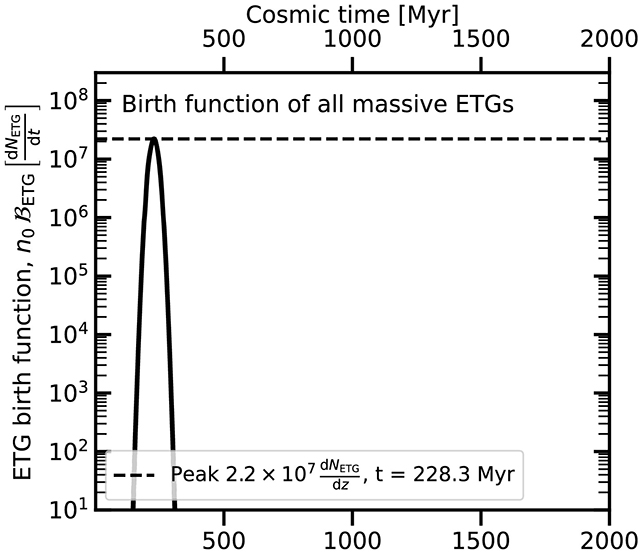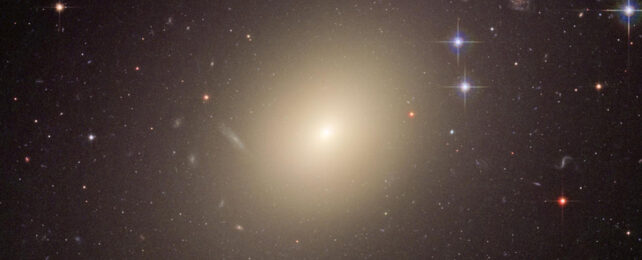Part of the reason scientists have settled on the Big Bang theory as the best explanation of how the Universe came into being is because of an 'afterglow' it emits – but a new study suggests we may need to rethink the source of this faint radiation.
Technically, this afterglow is known as Cosmic Microwave Background (CMB) radiation, and it's been traveling through space for more than 13 billion years, since soon after the Big Bang first went bang. It can be picked up by our most advanced telescopes.
Now, researchers from Nanjing University in China and the University of Bonn in Germany have run calculations suggesting we've overestimated the strength of the CMB. In fact, it might not even be there at all.
The rocking of the cosmological boat, as it were, is driven by new evidence of early-type galaxies (ETGs). Recent data from the James Webb Space Telescope suggests these ETGs might account for some or even all of the CMB, depending on the simulation used.
"Our results are a problem for the standard model of cosmology," says physicist Pavel Kroupa, from the University of Bonn. "It might be necessary to rewrite the history of the Universe, at least in part."
Scientists already know plenty about ETGs, which are usually elliptical in shape. What's new is that recent studies, and this latest interpretation of them, point to these types of galaxies having formed even earlier than previous models accounted for.

If that timeline shifts, then so does the pattern of radiation spreading out across the Universe. In simple terms, the Universe may have moved through its initial phase of gas surges and galaxy formation quicker than we imagined.
"The Universe has been expanding since the Big Bang, like dough that is rising," says Kroupa. "This means that the distance between galaxies is increasing constantly."
"We have measured how far apart elliptical galaxies are from one another today. Using this data and taking into account the characteristics of this group of galaxies, we were then able to use the speed of expansion to determine when they first formed."
This earlier estimate for the formation of these ETGs means that their brightness could emerge "as a non-negligible source of CMB foreground contamination", the researchers write.
We should bear in mind that this research is still in its preliminary stages. It's not time yet to start pulping scientific textbooks – or whatever the modern equivalent is. Rewriting Wikipedia, perhaps? But this research certainly raises some big questions.
Given the almost unimaginable timescales and distances involved, it's difficult for astrophysicists to always be precise. The researchers suggest anywhere from 1.4 percent to 100 percent of the CMB could be explained by their new models.
What's certain is that as our space telescopes and analysis systems get more sophisticated, we're learning more about the surrounding Universe than ever before – and that in turn means some previous assumptions may have to be readjusted, including those about the very formation of the Universe itself.
"In the view of the results documented here, it may become necessary to consider [other] cosmological models," write the researchers in their published paper.
The research has been published in Nuclear Physics B.
